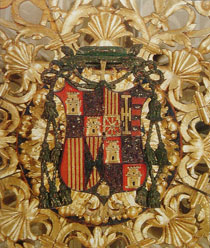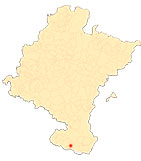Monastery of Tulebras
Promoters
Hernando de Aragón y Gurrea (1418-1575), Archbishop of Zaragoza, one of the most prominent figures of the 16th century in Aragon as a politician, patron and man of the Church, was the driving force behind the Renaissance reform of the temple. Thanks to his intervention as general visitor of the Cistercian Order, his influence also reached Navarre, and thanks to his economic financial aid , he carried out the reconstruction of the vault, which is one of the most beautiful examples in the area. These reforms were carried out under the abbacy of two outstanding and charismatic women, whose efforts to raise funds for the works were decisive; Doña María de Beaumont y Navarra (1547-1559) and Doña Ana Pasquier de Eguaras (1559-1573). The first belonged to the noble lineage of the Beaumont and Navarre, daughter of the Constable of Navarre and third member of the family that occupied the abbey of the monastery in that century. The second was the daughter of the Lords of Barillas, a distinguished and wealthy family residing in Tudela with great ties to the Cistercian Order, which several of its members joined.
GARCÍA M. COLOMBAS, M.B., Monasterio de Tulebras, Gobierno de Navarra, department de Educación y Cultura, Institución Principe de Viana, Pamplona, 1987.
ORBE Y SIVATTE, A., Monasterio de Tulebras. Un oasis para la contemplación, nº 60, Edilesa, 2001.
REAU, Louis, Iconographie de L'Art Crrétien. (5 vols.), vol. 1, Paris 1956, p. 22.
RECONDO, J.M., "Monasterio de Tulebras", TCP, nº 127, Pamplona, Diputación Foral de Navarra, 1972.
TARIFA CASTILLA, M.J., La arquitectura religiosa del siglo XVI en la merindad de Tudela, Gobierno de Navarra, department de Educación y Cultura, Institución Príncipe de Viana, Pamplona, 2005.












